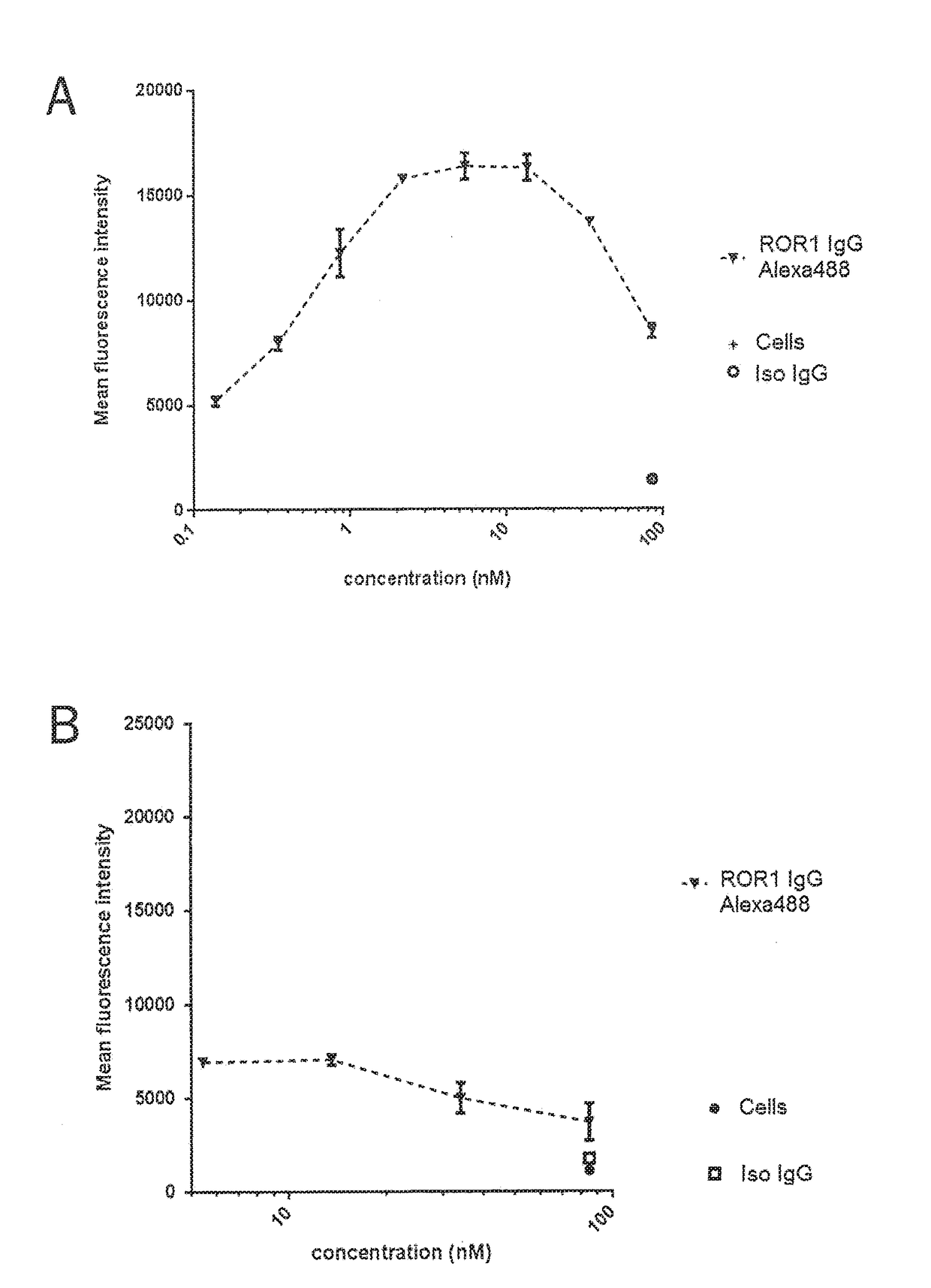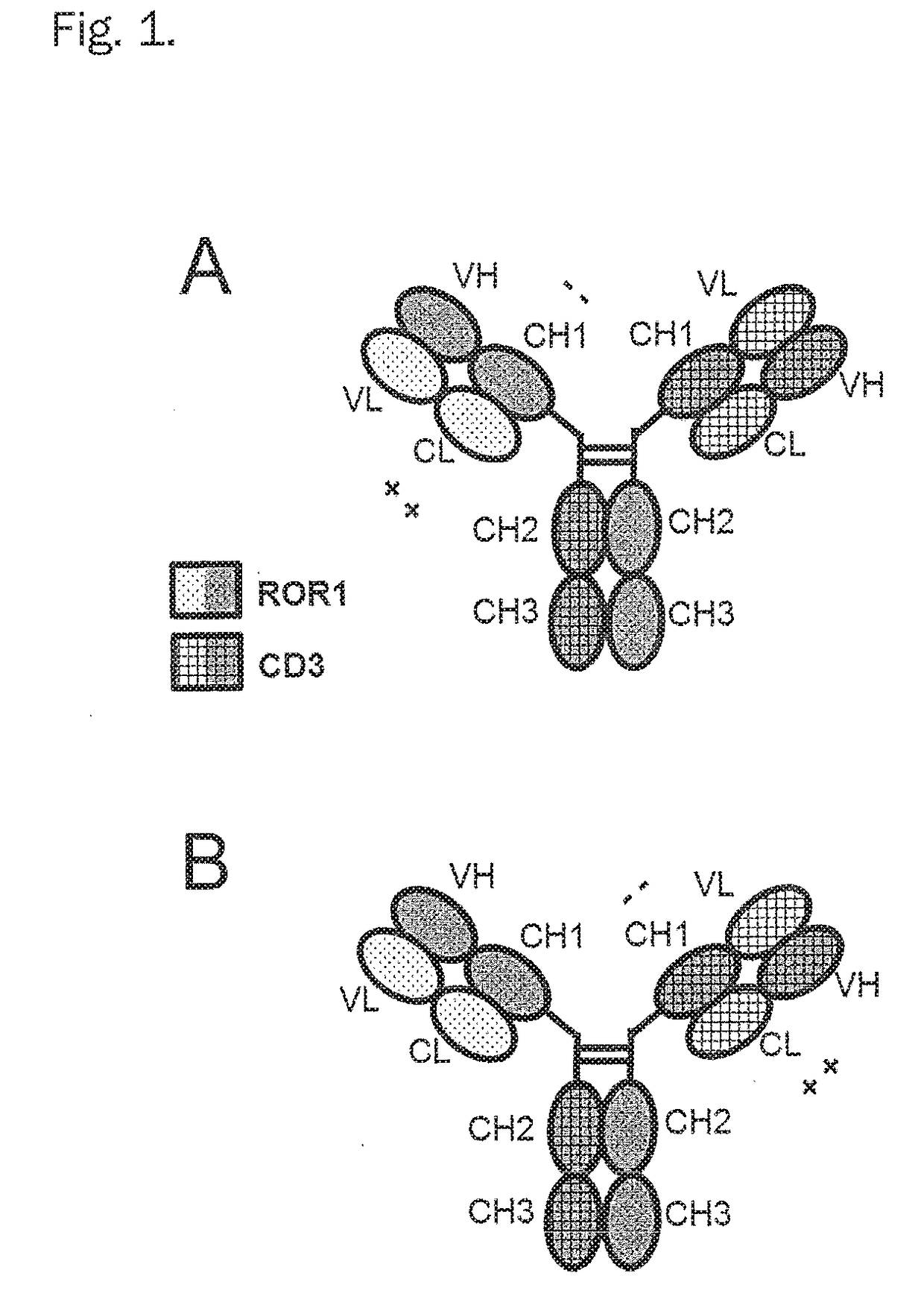Bispecific antibodies against cd3epsilon and ror1
a technology of cd3epsilon and ror1, which is applied in the field of cd3epsilon and ror1 bispecific antibodies, can solve the problems of insufficient recombinant preparation, inability to easily develop recombinant techniques, and inability to accurately describe the progression towards the clinic. , to achieve the effect of superior cytotoxicity activity of antibodies and reduced clinical dose rang
- Summary
- Abstract
- Description
- Claims
- Application Information
AI Technical Summary
Benefits of technology
Problems solved by technology
Method used
Image
Examples
embodiment 2
4. The bispecific antibody , characterized in that said bispecific antibody comprises in addition a Fab fragment of said first antibody (further named also as “ROR1-Fab”) and in the constant domain CL said ROR1-Fab the amino acid at position 124 is substituted independently by lysine (K), arginine (R) or histidine (H) (numbering according to Kabat), and wherein in the constant domain CH1 of said ROR1-Fab the amino acid at positions 147 and the amino acid at position 213 is substituted independently by glutamic acid (E), or aspartic acid (D) (numbering according to Kabat).
embodiment 3
5. The bispecific antibody , characterized in that said bispecific antibody comprises in addition a second Fab fragment of said first antibody (“ROR1-Fab”).
embodiment 1
6. The bispecific antibody according to any one of embodiment 1, characterized in consisting of one Fab fragment of an antibody specifically binding to CD3ε (further named also as “CD3-Fab”), and one Fab fragment of an antibody specifically binding to ROR1 (further named also as “ROR1-Fab(s)”) and a Fc part, wherein the CD3-Fab and the ROR1-Fab are linked via their C-termini to the hinge region of said Fc part and wherein either the CD3-Fab or the ROR1-Fab comprises aa substitution and the CD3-Fab comprises crossover.
PUM
| Property | Measurement | Unit |
|---|---|---|
| molecular weight | aaaaa | aaaaa |
| molecular weight | aaaaa | aaaaa |
| dissociation constant | aaaaa | aaaaa |
Abstract
Description
Claims
Application Information
 Login to View More
Login to View More - R&D
- Intellectual Property
- Life Sciences
- Materials
- Tech Scout
- Unparalleled Data Quality
- Higher Quality Content
- 60% Fewer Hallucinations
Browse by: Latest US Patents, China's latest patents, Technical Efficacy Thesaurus, Application Domain, Technology Topic, Popular Technical Reports.
© 2025 PatSnap. All rights reserved.Legal|Privacy policy|Modern Slavery Act Transparency Statement|Sitemap|About US| Contact US: help@patsnap.com



